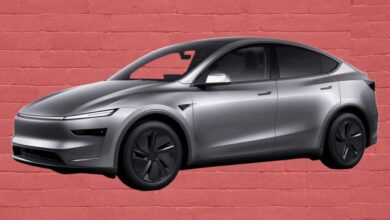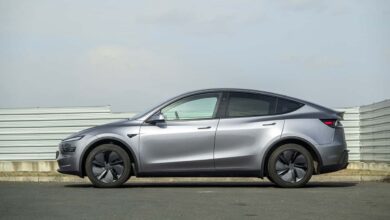The EV Tax Credit Is Dead. Here’s Why I Still Have Hope

It’s a solemn day in the electric vehicle world. The United States House Of Representatives has now passed President Donald Trump’s domestic agenda, which includes killing the $7,500 federal clean vehicle tax credit and a host of manufacturing incentives. That means EVs are going to get a lot less affordable, starting at the end of September. The move will delay America’s transition to a clean-energy future, but don’t worry. It absolutely will not stop it.
Electric vehicles will replace gasoline passenger cars in almost every driveway. It’ll just take longer.
The peak sales year for purely internal-combustion vehicles has already happened. It wasn’t recent, either. Internal-combustion car sales hit a record in 2017 and have been steadily declining ever since. Experts don’t expect gas-vehicle sales to ever break that record again. Any overall sales growth for new vehicles since has come from hybrids, plug-in hybrids and EVs.
This has happened during a period when many of the world’s largest EV markets have dialed back or eliminated incentives. They’re rarer across the board, with countries like Germany and China getting rid of their most generous incentives. The only reason that the U.S. is in a weird situation is that it still has many places where EV adoption has barely started, so pulling back on incentives now seems odd. Even still, many markets have proven that you don’t need incentives to have a thriving EV market.

The Tesla Model Y was the best-selling car in the world in 2023. The revised version is a fantastic all-around car.
Photo by: Tesla
Why?
Because EVs are better cars. All EVs are quieter and smoother than equivalent internal-combustion products, and the true software-defined options from companies like Rivian and Tesla offer functionality and user interfaces that blow away products from legacy companies.
Proven EV platforms are also demonstrably reliable, though just about any all-new model struggles for the first few years as kinks are worked out. That’s true in the gas world, too, and in the long term EVs have far fewer complicated parts to refine. Tesla figured its components out, and now you can comfortably drive a Model 3 or Model Y well past the 300,000-mile mark. Regardless of what EV you buy, you don’t really have to worry about battery failures either.
These are some of the reasons why EV owners rarely go back to gas. Once you’ve experienced a silent, simple car with excellent software and next to no operating costs, you don’t want to go back.
If you’re interested in getting a new EV based on that, check out our guide to the best EVs on sale.
Still, that experience isn’t available to everyone. While nearly anyone with a private driveway or garage would enjoy the experience of waking up every morning with a full battery, those that don’t will have to rely on a charging network that is still in its infancy. It’s fine in some markets, but bad in others. It is rapidly improving, but the process may take a few years.
Plus, EVs remain expensive. They are newer and rely on supply chains that are largely still being constructed, leading to a lot of one-time costs that drive up prices across the board. This is improving, but slowly. For now, automakers have plenty of products that are too expensive to compete effectively without a tax credit, but dropping those may actually be a good thing for the EV market.

The early Toyota bZ4x made it feel like Toyota wasn’t taking EVs seriously. But the company is giving it a host of upgrades for next year, because even Toyota knows that EVs are the future.
Frankly, overly subsidized EVs may be contributing to the idea that no one wants EVs. Hell, it’s half true. When I look at what’s sitting on lots today, I think, damn, nobody does want any of these EVs. That’s because products like the Toyota bZ4x, Volkswagen ID.4 and even my own Chevy Blazer EV are symptomatic of an industry that hasn’t yet learned how to build compelling EVs. They are all struggling right now, and that may continue.
Those models will be much harder to sell without tax credits. In my view, that may give automakers an opportunity to refocus on creating EVs that customers truly desire, rather than living or dying by a price war. The Tesla Model Y was the best-selling car in the world in 2023 for a reason: Fully resolved EVs are compelling products that are desirable across the world.
Regulatory rollbacks may loosen pressure on American automakers to fully pivot toward making true clean-sheet EVs, but the reality of the global market is already clearly committed to that path. Companies like BMW, Mercedes and Toyota are having to get used to a world where they compete with cutting-edge Chinese EVs, even in their home markets.
They are going to respond with better, more affordable, more complete EVs than they have ever built before. Whether it’s the Mercedes CLA, the Neue Klasse iX3 or the updated Toyota bZ, the products will keep getting better. At the same time, more and more Americans will catch on to the fuel savings, the decreased maintenance requirements and the more pleasant driving experience that EVs offer. It’ll take time, but good things always do.
Contact the author: Mack.Hogan@insideevs.com
Source link


